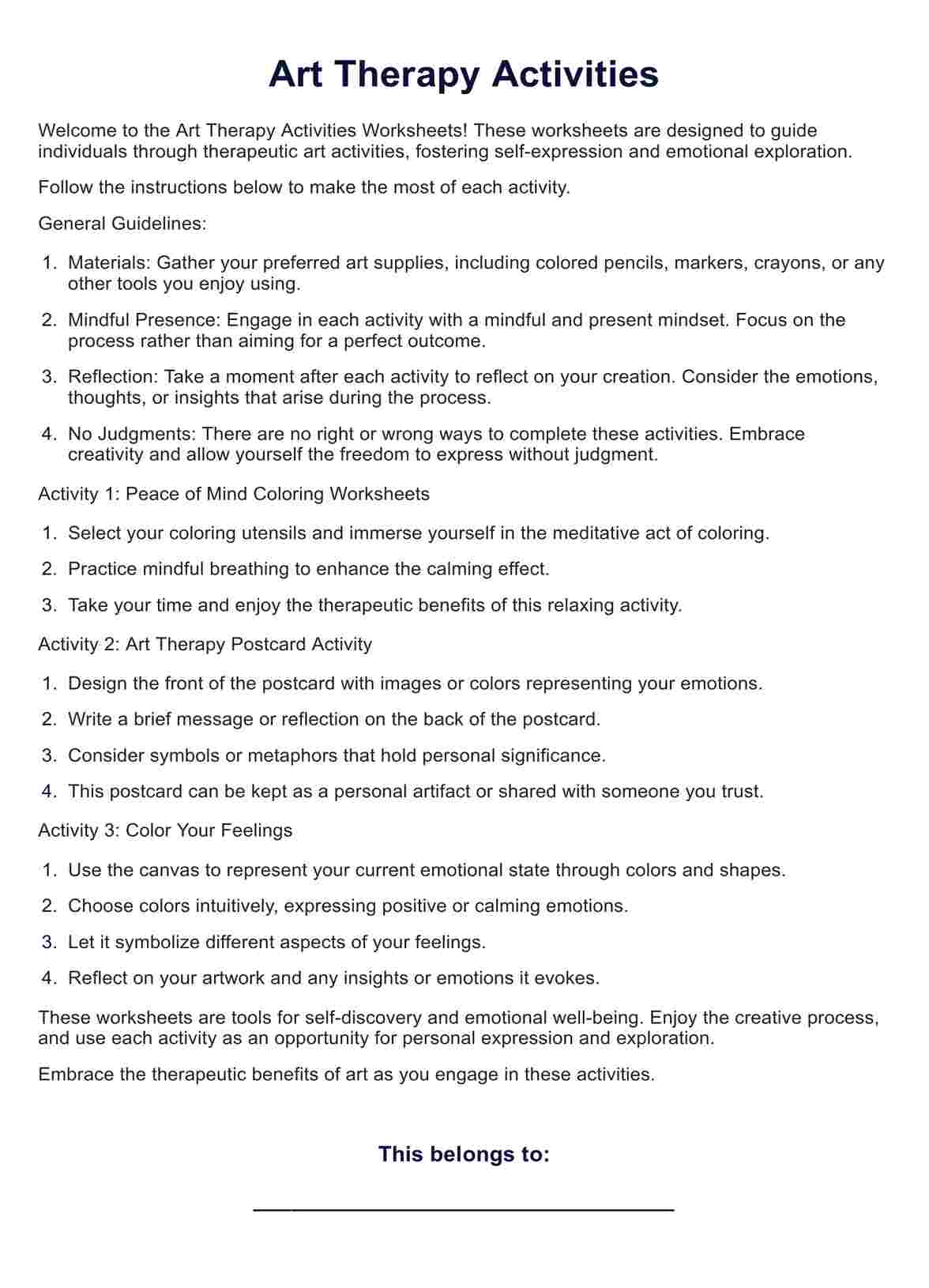
Art Therapy Activities PDF
Foster self-esteem and self-awareness through art therapy activities. Explore the transformative power of creating art with our Art Therapy Activities PDF.
Use Template
Art Therapy Activities PDF Template
EHR and practice management software
Get started for free
*No credit card required
Free
$0/usd
Unlimited clients
Telehealth
1GB of storage
Client portal text
Automated billing and online payments











